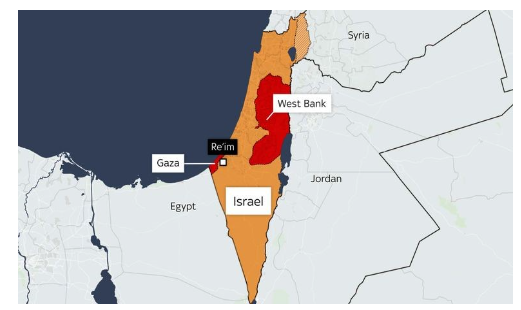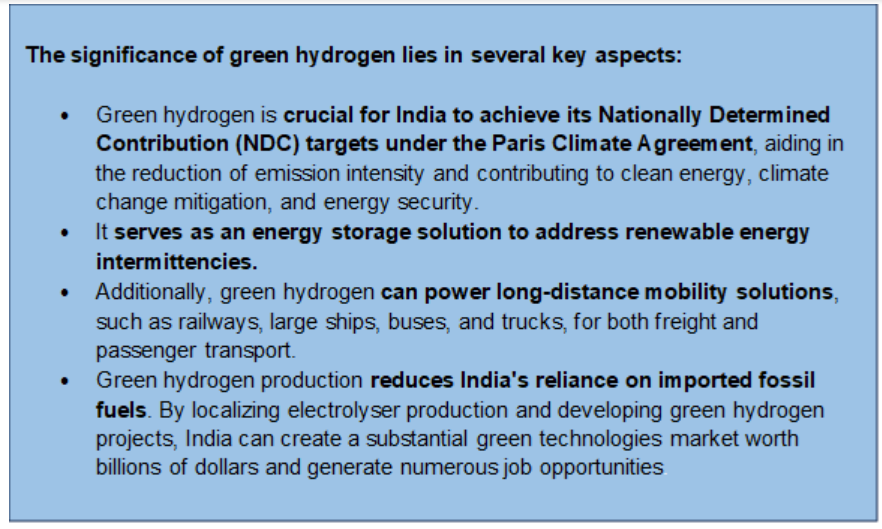Thursday, 2nd November 2023
Multilingualism in India - Edukemy Current Affairs
In News
In today's globalized world, multilingualism is gaining recognition for its cognitive advantages and its potential to enrich diverse cultures.
How would you describe India's linguistic diversity?
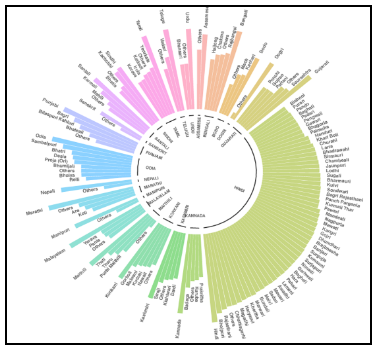
- India is renowned for its linguistic diversity, boasting over 19,500 languages spoken across the country.
- This diversity encourages multilingualism, with more than a quarter of the population using two languages and approximately 7% speaking three.
- Multilingualism is not just about numbers; it embodies culture, identity, and history, reflecting India's diverse and pluralistic society.
- Multilingualism offers cognitive benefits, enhances social and emotional skills, and provides practical advantages like career opportunities and cultural understanding.
- It allows individuals to connect with a wider range of people and explore diverse cultures and resources.
What are the language rights and duties in India as defined by the Constitution?
- The Indian Constitution contains several key provisions related to languages.
- Article 29 protects minority interests, ensuring the preservation of distinct languages, scripts, and cultures while prohibiting discrimination.
- The Eighth Schedule lists 22 official languages, including classical languages.
- Article 343 designates Hindi in Devanagari script as the official language of the Union, with English as an associate official language for 15 years.
- Article 345 allows states to adopt languages for official purposes.
- Article 346 recognizes linguistic diversity for official communication.
- Article 347 empowers the President to recognize languages at the state level.
- Article 348 deals with language use in courts.
- Article 350 ensures the right to submit grievances in one's language.
- Article 350A mandates primary education in a mother tongue, and Article 350B establishes a "Special Officer" for linguistic minorities.
- Article 351 allows the Union government to issue directives for the development of the Hindi language.
|
UPSC Previous Year Questions Prelims (2021) Q. Consider the following statements:
Which of the above statements is/are correct? (a) 1 only Ans: (b) Prelims (2021) Q2. With reference to India, the terms ‘HaIbi, Ho and Kui’ pertain to (2021) (a) dance forms of Northwest India Ans: (d) Prelims (2015) Q.3 Which one of the following was given classical language status recently? (2015) (a) Odia Ans: (a) |
Source: LM
Minimum Wage Policy and Gig Workers
In News
The results of the fifth annual study by Fairwork India, which examined 12 e-commerce platforms, paint a bleak picture of the working conditions experienced by gig workers in India.
Key Findings of the Study:
- Only three platforms (Big basket, Flipkart, and Urban Company) have minimum wage policies
- However, no platform ensures a living wage for workers.
- The study explores how working conditions contribute to worker alienation, often tied to discrimination based on factors like caste, class, gender, and religion.
- Some platforms offer accident insurance and compensation for income loss due to accidents or medical reasons.
- They have also improved contract clarity, data protection, and procedures for handling worker issues, including appeals for disciplinary actions.
- None of the platforms received points for Fair Representation, indicating a lack of acknowledgment for collective worker bodies, despite an increase in worker collectivization in recent years.
State of gig economy in India

- The gig economy in India is marked by short-term contracts and freelance work, with individuals taking on project-based tasks rather than traditional full-time employment.
- India has seen significant growth in the gig economy, with around 7.7 million gig workers in 2020, expected to increase to 23.5 million by 2029-30, comprising about 4% of the country's livelihood.
- Gig work is spread across low, medium, and high-skilled jobs.
- However, gig workers face challenges, including exclusion from social security and labour legislation due to their ambiguous employment status.
- They often miss out on benefits and legal protections, affecting their financial security in times of need.
- The government has taken steps to address these issues, such as the Code on Social Security (2020), which obligates gig employers to contribute to a Social Security Fund, and the Code on Wages, 2019, which establishes universal minimum wages, including for gig workers.
Minimum wage policy of India
- The Minimum Wage Policy in India is governed by the Code of Wages Act 2019, which modernizes labour laws to ensure more transparency and accountability.
- It universalizes minimum wage provisions for all employees, regardless of the sector or wage limit, with the aim of providing a "Right to Sustenance."
- The Central Government sets floor wages, considering living standards, and states must set minimum wages higher than the floor wage.
- The concept of a floor wage ensures a minimum baseline wage, preventing state governments from setting wages below this threshold.
- However, concerns have arisen about the potential for capital flight to regions with lower wages.
Way Ahead
- To address the evolving nature of gig work, India's labour laws should provide clear guidelines for classifying gig workers, ensuring they receive appropriate legal protections and benefits.
- This includes distinguishing between independent contractors and traditional employees. Additionally, efforts should be made to offer gig workers access to social security benefits like retirement savings, health insurance, and unemployment benefits, possibly through a portable benefits system.
- Ensuring fair compensation for gig workers and establishing minimum wage standards for specific gig roles can help prevent exploitation.
- Encouraging continuous skill development and training for gig workers, through government and industry partnerships, can enhance their employability and income potential.
|
UPSC Previous Year Questions Prelims (2022)
(a) Central Statistics Office Ans: (c) Mains (2021) Q. Examine the role of ‘Gig Economy’ in the process of empowerment of women in India. |
Source: TH
Carbon Nanoflorets - Edukemy Current Affairs
In News
IIT Bombay researchers have developed carbon nanoflorets that demonstrate exceptional efficiency in converting sunlight into heat.
About Carbon Nanoflorets

- Researchers from IIT Bombay have developed carbon nanoflorets with an exceptional light absorption efficiency of 87%.
- These nanoflorets can absorb various sunlight frequencies, including infrared, visible light, and ultraviolet, unlike traditional solar-thermal materials.
- The creation process involves heating dendritic fibrous nanosilica (DFNS) with acetylene gas, resulting in carbon nanoflorets resembling marigold flowers under a microscope.
- The unique structure of carbon cones minimizes light reflection and maximizes internal absorption, capturing sunlight and converting it into thermal energy.
- The nanoflorets' design ensures minimal heat dissipation, allowing for efficient utilization of generated thermal energy.
Carbon nanoflorets have significant applications and commercial potential, particularly in the following areas:
- A one-square-meter coating of carbon nanoflorets can efficiently vaporize water, outperforming commercial solar stills.
- This technology offers a sustainable and cost-effective solution for water heating, reducing dependence on fossil fuels.
- Nanoflorets can be applied to various surfaces, including paper, metal, and terracotta clay, making them versatile for different applications.
- Carbon nanofloret coatings enable users to harness solar energy for eco-friendly home heating, contributing to reduced carbon footprint and environmental sustainability.
- Coated nanoflorets exhibit exceptional stability, with a minimum lifespan of eight years, and ongoing research is assessing their durability under various environmental conditions.
Source: TH
Wild Dogs Reappear in Debrigarh Sanctuary
In News
Wild dogs have made a reappearance in Odisha's Debrigarh Sanctuary.
About Debrigarh Wildlife Sanctuary
- Located near the Hirakud Dam in the Bargarh district of Odisha, Debrigarh Sanctuary spans an area of 346.91 square kilometres.
- To the east and north, it is bordered by the expansive Hirakud reservoir.
- This sanctuary was officially designated as a wildlife sanctuary on February 8, 1985.
- It serves as a crucial site for preserving the natural habitat and wildlife within the state of Odisha.
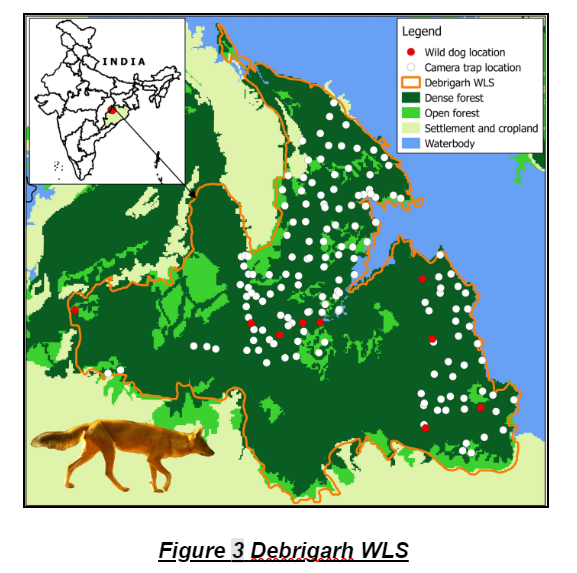
- The sanctuary features dry deciduous forests.
- Debrigarh Sanctuary is home to a diverse range of wildlife, including the four-horned antelope, Indian leopard, Indian elephant, sambar, chital, and gaur, among others.
Source: TH
Strong Growth Across Core Industries in India
In News
Data from the Ministry of Commerce & Industry revealed that in September, the Index of Eight Core Industries (ICI) in India recorded an 8.1 percent annual growth.
About the index of eight core industries and its significance
- The Index of Eight Core Industries (ICI) is a production volume index that assesses the collective and individual performance of eight vital core industries in India.
- As of April 2021, the core industries include
- petroleum refinery production
- Electricity
- Steel
- Coal production
- Crude oil
- Natural gas production
- Cement production
- Fertilizer production
- The Eight Core Industries comprise 40.27% of the weight of items included in the Index of Industrial Production (IIP).
- The ICI is compiled and released by the Office of Economic Adviser (OEA) within the Department for Promotion of Industry and Internal Trade (DPIIT) under the Ministry of Commerce and Industry.
- It serves as an important indicator offering early insights into the production performance of these key industries, which can have a significant impact on both general economic and industrial activities.
About the index of industrial production and its significance
- The Index of Industrial Production (IIP) is a crucial indicator that tracks changes in the volume of industrial product production within a specific time frame.
- It is published on a monthly basis by the National Statistical Office (NSO) under the Ministry of Statistics and Programme Implementation.
- The IIP is a composite metric that gauges the growth rate in various industry groups, categorized by broad sectors (Mining, Manufacturing, and Electricity) and use-based sectors (Basic Goods, Capital Goods, and Intermediate Goods).
- The base year for the IIP is 2011-2012.
- This indicator is instrumental in policy formulation by government agencies such as the Ministry of Finance and the Reserve Bank of India.
- It also plays a significant role in the calculation of quarterly and advance Gross Domestic Product (GDP) estimates.
|
UPSC Previous Year Questions Prelims (2015) Q. In the ‘Index of Eight Core Industries’, which one of the following is given the highest weight? (a) Coal production Ans: (b) Exp:
|
Source: ET
Mera Yuva Bharat (MY Bharat) - Edukemy Current Affairs
In News
The Union Cabinet has given the green light for the creation of an autonomous body called "Mera Yuva Bharat" (MY Bharat), which aims to harness technology for fostering youth development and youth-led initiatives.
About Mera Yuva Bharat (MY Bharat)
- Mera Yuva Bharat (MY Bharat), as an autonomous body, will focus on youth aged 15-29 (or 10-19 for specific adolescent programs), aligning with the National Youth Policy's definition of 'Youth.'
- It aims to empower youth with resources and opportunities to become community change agents and bridge the gap between the government and citizens as "Yuva Setu."
- MY Bharat will enhance leadership skills through experiential learning, shifting from physical interactions to programmatic approaches and creating a centralized youth database.
Source: PIB
National Company Law Appellate Tribunal
In News
The NCLAT has postponed the hearing of a plea by Jet Airways' Committee of Creditors (CoC) challenging the transfer of the airline's ownership to Jalan-Kalrock Consortium (JKC) to November 9th.
About National Company Law Appellate Tribunal
- The National Company Law Appellate Tribunal (NCLAT) was established under Section 410 of the Companies Act, 2013, effective from June 1, 2016.
- It serves as a specialized forum for addressing legal matters related to company law, insolvency, and competition law.
- Objectives:
- Adjudicate appeals against decisions made by the National Company Law Tribunal (NCLT) under Section 61 of the Insolvency and Bankruptcy Code, 2016 (IBC).
- Review appeals against orders issued by the Insolvency and Bankruptcy Board of India under Section 202 and Section 211 of IBC.
- Address appeals against directions, decisions, or orders issued by the Competition Commission of India (CCI).
- Serve as the Appellate Tribunal for appeals against orders from the National Financial Reporting Authority.
- Headquarters of NCLAT is located in New Delhi.
- Composition:
- The tribunal comprises a chairperson, judicial members, and technical members, appointed by the Central Government based on their expertise in fields like law, finance, accountancy, management, and administration.
- Case Disposal:
- Upon receiving an appeal from an aggrieved party, NCLAT reviews the matter, offering an opportunity for a fair hearing. Subsequently, it issues orders as it deems appropriate, which may confirm, modify, or annul the appealed decision.
- NCLAT is mandated to resolve appeals within a maximum period of six months from the date of receipt.
Source: LM
Tamil Lambadi embroidery - Edukemy Current Affairs
In News
The Porgai Artisan Association Society, consisting of over 60 women, creates and sells embroidered clothing to raise awareness about this traditional art form and to ensure its transmission to future generations.
About Tamil Lambadi embroidery

- The Lambadi community has a rich tradition of practicing Lambadi embroidery, which has been a vital aspect of their identity, serving to adorn their clothing and household items.
- This intricate embroidery, predominantly crafted by Lambadi women on cotton and silk fabrics, involves colourful cotton threads.
- The traditional designs feature geometric patterns like squares, rectangles, and circles, while also drawing inspiration from the local environment, including forests, birds, fruits, and flowers.
- The elderly women within this tribal community continue to wear their traditional five-piece attire, known as Petia, made from Mushru silk from Kutch.
Source: TH
Black Stork - Edukemy Current Affairs
In News
A seldom-seen Black Stork was recently sighted in Uttar Pradesh's Hastinapur Wildlife Sanctuary.
About The Black Stork
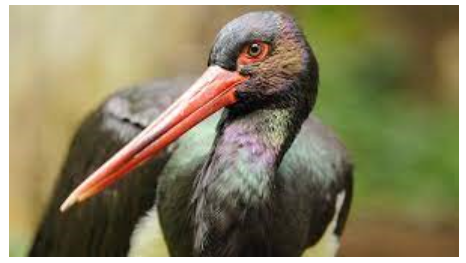
- The Black Stork (Ciconia nigra) is a large member of the stork family Ciconiidae.
- It nests in wetlands, coniferous and mixed forests, and can be spotted in grasslands, farmlands, as well as along lakes and rivers during the winter.
- This species is known for its long-distance migration, with European populations wintering in tropical Sub-Saharan Africa and Asian populations spending the winter in the Indian subcontinent.
- The Black Stork primarily inhabits regions across Europe, Asia, and several African countries.
- According to the IUCN, it is categorized as "Least Concern."
About Hastinapur WLS
- Situated within the state of Uttar Pradesh, this sanctuary is nestled along the northern banks of the river Ganga, encompassing areas in the districts of Muzaffarnagar and Bijnor.
- Its landscape boasts diverse features, including wetlands, marshes, dry sand beds, and gently sloping ravines.
- The sanctuary is home to a range of wildlife, including Swamp Deer, Leopards, Wild Cats, Wild Otters, and Pythons.
- As part of the "Asia Flyway" project, the region attracts a multitude of both local and foreign migratory birds, drawn to the numerous water bodies in the vicinity.
About "Asia Flyway" project
- The "Asia Flyway" project is a crucial initiative for bird conservation.
- It focuses on preserving habitats along the migration route of birds, promoting their well-being and biodiversity.
- The project spans several Asian countries, facilitating the protection of various bird species through collaborative efforts.
- It plays a pivotal role in safeguarding the ecological balance and bird populations.
Source: TOI
Stocktaking climate Finance - Edukemy Current Affairs
Context: The article underscores the importance of climate finance in fostering global trust but raises concerns about disparities in funding, voluntary contributions, and political commitment.
Climate Finance Challenges Ahead of COP 28
- The importance of climate finance for trust in COP 28 negotiations is emphasized as the Synthesis Report reveals a 1.1°C temperature increase driving the need for mitigation actions in developing countries.
- Despite a $100 billion commitment by developed nations, the Glasgow conference reported only $79.6 billion mobilized, raising concerns about inadequate funding for supporting low-carbon transitions in developing nations, who estimate financial needs close to $6 trillion by 2030, including significant requirements in India's NDCs.
Challenges in Climate Finance: Disparities, Mandatory Frameworks, and Global Urgency Disparity
- Developed nations display inequities in meeting climate finance commitments, with the U.S. contributing just 5% of its equitable share, hindering effective fund mobilization for climate action.
- The absence of a compulsory framework for contributions by developed countries presents a significant challenge.
- Unclear criteria for fund collection create uncertainties in reaching financial goals.
- The second replenishment of the Green Climate Fund (GCF) showed contributions from only 25 out of 37 developed nations.
- The shortfall in meeting commitments raises doubts about financial reliability.
- In contrast to the swift response to the 2009 global financial crisis, there's a noticeable lack of political will and urgency among developed countries to address climate finance needs, impeding progress in safeguarding the global environment.
Climate Finance Challenges and Developing Nations
- The mobilized $79.6 billion annually falls below the committed $100 billion, impeding the ability of developing nations to shift toward sustainability, raising worries about meeting climate finance objectives.
- The incorporation of voluntary contributions from nine developing countries within the Green Climate Fund (GCF) introduces complexities in defining and accounting for international public climate finance, highlighting the need for standardized contribution criteria.
- Developing nations, as indicated in their Nationally Determined Contributions (NDCs), articulate financial requirements nearing $6 trillion by 2030.
- The disparity between these needs and actual funds mobilized presents a substantial concern for these nations.
Crux of the issue
- Discrepancies between promised amounts and real contributions reveal a crisis in the commitment of developed nations, eroding the efficacy of global climate finance mechanisms and affecting the shift towards sustainability.
- The absence of political determination and a sense of immediacy in addressing climate finance requirements in developed countries signifies a significant deficiency. It is imperative to take urgent action to bridge the divide between commitments and actual contributions.
What can be a potential path ahead?
- Equitable Burden-Sharing:
- It is essential to establish a transparent and universally accepted formula for distributing responsibilities among developed nations, ensuring consistent and fair contributions to climate finance.
- Compulsory Contribution Framework:
- The introduction of a mandatory framework for contributions by developed countries, accompanied by well-defined criteria for fund mobilization, is crucial to enhance the reliability of financial commitments.
- Global Collaboration and a Sense of Urgency:
- Nurturing a collective and urgent response, akin to previous financial crises, is of paramount importance.
- This approach is necessary to effectively address the pressing climate finance requirements and fulfil international commitments.
- Enhancing Capacity:
- Giving priority to enhancing the capacity of developing nations is crucial for facilitating a seamless transition toward sustainable practices.
- This includes providing support for economic opportunities and livelihoods for those reliant on fossil fuel-based economies.
Source: TH
Share the article
Edukemy’s Current Affairs Quiz is published with multiple choice questions for UPSC exams
MCQ
Get Latest Updates on Offers, Event dates, and free Mentorship sessions.

Get in touch with our Expert Academic Counsellors 👋
FAQs
UPSC Daily Current Affairs focuses on learning current events on a daily basis. An aspirant needs to study regular and updated information about current events, news, and relevant topics that are important for UPSC aspirants. It covers national and international affairs, government policies, socio-economic issues, science and technology advancements, and more.
UPSC Daily Current Affairs provides aspirants with a concise and comprehensive overview of the latest happenings and developments across various fields. It helps aspirants stay updated with current affairs and provides them with valuable insights and analysis, which are essential for answering questions in the UPSC examinations. It enhances their knowledge, analytical skills, and ability to connect current affairs with the UPSC syllabus.
UPSC Daily Current Affairs covers a wide range of topics, including politics, economics, science and technology, environment, social issues, governance, international relations, and more. It offers news summaries, in-depth analyses, editorials, opinion pieces, and relevant study materials. It also provides practice questions and quizzes to help aspirants test their understanding of current affairs.
Edukemy's UPSC Daily Current Affairs can be accessed through:
- UPSC Daily Current Affairs can be accessed through Current Affairs tab at the top of the Main Page of Edukemy.
- Edukemy Mobile app: The Daily Current Affairs can also be access through Edukemy Mobile App.
- Social media: Follow Edukemy’s official social media accounts or pages that provide UPSC Daily Current Affairs updates, including Facebook, Twitter, or Telegram channels.

